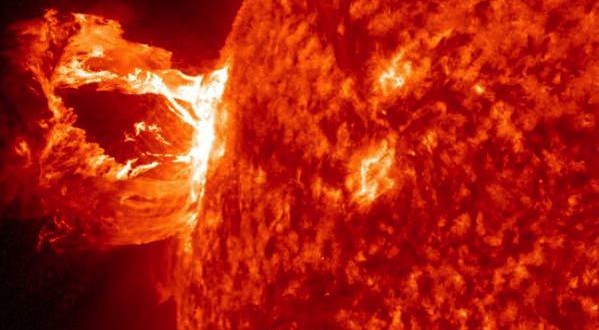On July 23, 2012, a gigantic geomagnetic storm erupted from the Sun’s surface. Had it been directed at Earth, it would have been the worst solar event ever in modern history, causing severe power outages that could cripple a electric-driven society. Luckily, that massive eruption was directed away from Earth and dissipated safely into outer space.
“The July 2012 solar storm was a shot across the bows for policymakers and space-weather professionals,” U.S.-based solar researchers said in the journal Space Weather last October. “Had the storm occurred in mid-July, the Earth would have been directly targeted … and an unprecedentedly large space-weather event would have resulted. There is a legitimate question of whether our society would still be picking up the pieces.”
In studying extreme solar storms, researchers employ as a benchmark a powerful storm that happened in 1859. The so-called Carrington Event, named after the British astronomer Richard Carrington who observed it first, caused a major coronal mass ejection, or CME, to travel directly toward Earth, damaging severely the new telegraph systems all over North America and Europe.
Pete Riley, a solar scientist at Predictive Science in San Diego, has carried out calculations indicating that the probability of a solar storm similar to the Carrington Event hitting the Earth in the next decade is around 12 percent.
If the 2012 solar storm had occurred a week earlier, a huge number of highly charged particles would have hit the Earth’s magnetic field at a speed of about 1,500 miles per second, which would have caused enough damage to the world’s electrical grids to leave hundreds of millions of customers without power for months or even years.
According to the U.S. National Academy of Sciences, it could take between four and 10 years to recover from the damages inflicted by a really powerful solar storm. It could also cost between $1 trillion and $2 trillion, 20 times the cost of Hurricane Katrina.
Scientists argue it is essential for the power industry and governments to better understand the impact powerful solar storms could have and to identify the systems that could be vulnerable to such events.
“In my view, the July 2012 storm was in all respects at least as strong as the 1859 Carrington Event,” Daniel Baker, a University of Colorado professor at its Laboratory for Atmospheric and Space Physics, told NASA. “The only difference is, it missed.”
Agencies/Canadajournal
 Canada Journal – News of the World Articles and videos to bring you the biggest Canadian news stories from across the country every day
Canada Journal – News of the World Articles and videos to bring you the biggest Canadian news stories from across the country every day



